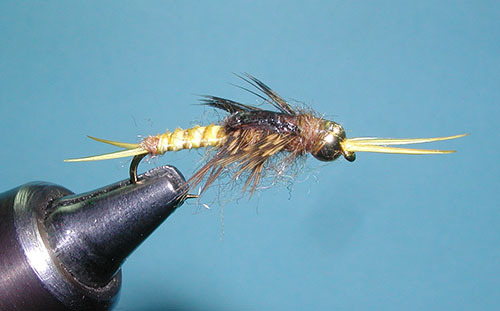

Poxyback Biot, Golden Stone Tying Instructions |
Materials:
|
|
Notes: The pattern has been adapted to many types of stoneflies, ie skwalas, goldens, little browns. Two basic colorations apply, Light and Dark. The dark coloration is used under turbid conditions while the light is used when the water is clear. Mike also designed two size ranges for the stoneflies. The standard size is #8-12 and the micro pattern is #14-18. Since stoneflies are present year-round in the stream, these size ranges and colors will cover all of your stonefly nymphs. You can use these patterns when searching for trout or for a realistic imitation during a hatch. If you are searching, try this pattern in the riffles and current seams, near rocky structures and streamside vegetation. Stoneflies like freestone streams. During Mid-March, the Skawalas will be hatching and in late May and June, the golden stoneflies will crawl along the bottom to reach shore. Trout will often locate themselves close to shore to intercept the stoneflies while staying in the edges of pockets and slots. The nymphs do not have good swimming abilities and are often swept up in the current. A drift-free presentation of the nymph within the feeding lanes will often produce results. Depending upon the water, some use indicators while others prefer to high-stick nymph without indicators.
| ||
|